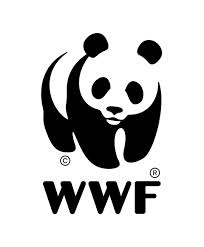Loss of Great Plains Grasslands Puts Critical Ecosystems at Risk
2.5 Million Acres Converted to Cropland Between 2015 and 2016

WASHINGTON, October 24, 2017 /3BL Media/ - The Great Plains lost about 2.5 million acres of previously intact grassland to crop production between 2015 and 2016, according to a new report from World Wildlife Fund (WWF). Across the US and Canada, the loss of grasslands undermines soil health and degrades water quality for downstream communities, while threatening iconic species, including songbirds and water-associated birds, and is driving the decline in the region’s native pollinators.
The 2017 Plowprint Report examines the impact of grassland loss on water quality. It found that protecting grasslands that are predicted to be plowed up can prevent an estimated 1.7 trillion gallons of water from running off into rivers, lakes, and other waterways. This is equivalent to the amount of water that 11.6 million households use each year. When water runs off of plowed ground with sediment and fertilizers, it can contaminate drinking water and suffocate marine life, which can disrupt the production of shrimp and other seafood in the Gulf of Mexico.
“Grasslands ecosystems are under enormous pressure,” said Martha Kauffman, WWF’s managing director of the Northern Great Plains program. “Across the Great Plains, urban development and energy exploration are driving grassland loss, but conversion for cropland development is by far the leading contributor. We urge Congress, the Administration, and the private sector to protect these vital landscapes, and the rural communities and wildlife they support.”
The 2017 Plowprint is the second annual analysis identifying intact habitat and tracking its loss to cropland. While loss continues, the annual conversion rates dropped from 1 percent between 2014 and 2015, to 0.69 percent the next year. Still, since 2009, nearly 8 percent of the landscape has been plowed for crops, leaving about 54 percent of the Great Plains grasslands intact.
WWF monitors annual conversion because the first plow-up of intact grasslands represents a significant ecological loss that can’t be easily recovered. From the first time it’s plowed, the habitat is degraded and the land loses much of its capacity to provide valuable ecosystem services, such as carbon storage and water filtration. Farmers and ranchers can use crops and livestock as tools to rebuild that soil and restore diverse plant life, but doing so can take decades. Croplands store less carbon than grasslands and are more prone to soil erosion, which can wash away with fertilizer, pesticides, and other compounds.
Many species that call the Great Plains home are also feeling the impact. The report cites six native song birds–Sprague’s pipit, chestnut-collared longspur, McCown’s longspur, Baird’s sparrow, lark bunting and Cassin’s sparrow—have suffered a decline of 65 to 94 percent since the 1960’s as a result of habitat loss.
“We can’t deny we’re moving toward a future where the global demand for food is set to double. As the population grows, plowing up of marginal lands and the last remaining temperate grasslands can’t be the solution,” added Kauffman. “The key to feeding a growing planet in the future is making more with what we already have. We all have an important role to play in that, from implementing national policies that elevate incentive-based conservation programs, to calling for sustainable sourcing commitments from companies, and improving stewardship of working lands, together.”
In the coming months, part of the solution will take center stage as the 2018 Farm Bill is up for debate. WWF calls for expanding conservation-smart programs like Sodsaver and providing incentives and technical assistance to landowners seeking to improve conservation on their land. WWF continues to work with farmers, ranchers and other stakeholders across the region to co-develop programs that prioritize sustainable production and responsible sourcing.
About World Wildlife Fund (WWF)
WWF is one of the world's leading conservation organizations, working in 100 countries for over half a century. With the support of almost 5 million members worldwide, WWF is dedicated to delivering science-based solutions to preserve the diversity and abundance of life on Earth, halt the degradation of the environment and combat climate change. Visit www.worldwildlife.org to learn more and follow our news conversations on Twitter @WWFNews.
Media Contact:
Susan McCarthy
susan.mccarthy@wwfus.org
202-495-4133
Kathryn Walsh
kathryn.walsh@wwfus.org
202-495-4441

